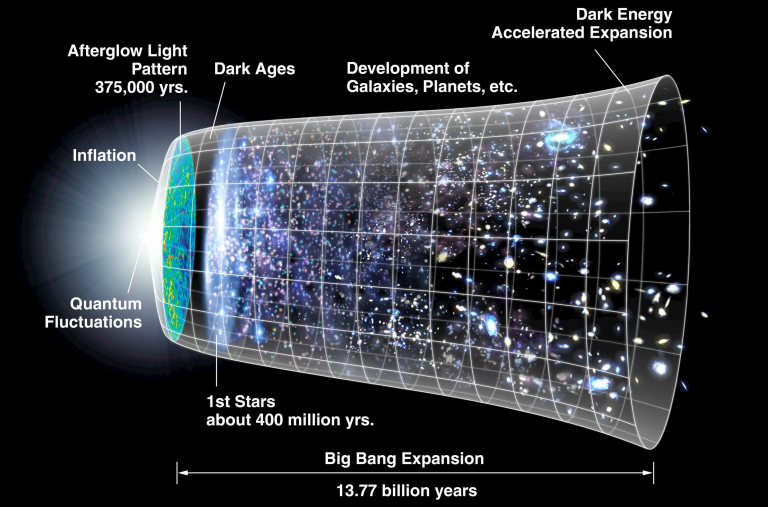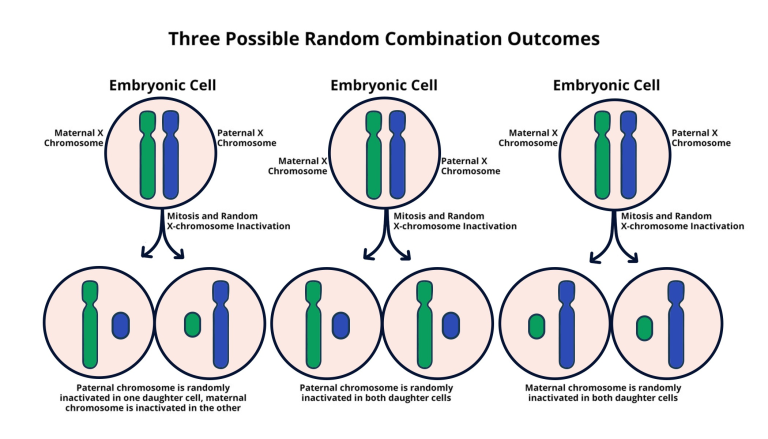Twisted graphene superconductors are at the forefront of cutting-edge material science, promising revolutionary advancements in technology. By manipulating the unique properties of graphene, researchers have observed superconducting behavior that unlocks the potential for lossless power transmission and breakthrough applications such as quantum computing. The superconducting electrons in these twisted stacks demonstrate unusual characteristics, differing significantly from traditional superconductors like aluminum. These new properties could lead to the development of energy-efficient detectors that are essential for fields like space exploration, where sensitivity and performance are crucial. The exploration of twisted graphene has opened a new chapter in superconductivity, offering exciting possibilities for various high-tech innovations.
In recent years, superconductors derived from twisted layers of graphene have emerged as a promising area of research, showcasing remarkable benefits that challenge conventional understanding. These advanced materials, characterized by their unique structural twists, exhibit superconducting capabilities that provide insights into quantum physics and material properties. This phenomenon enables numerous applications, particularly in energy-efficient technologies and high-performance computing environments. The intriguing behavior of electrons within these twisted arrangements not only enhances our understanding of superconductivity but also holds significant promise for future innovations in various modern technologies. As researchers delve deeper into this fascinating domain, the potential for groundbreaking advancements continues to expand.
Understanding Superconducting Electrons in Twisted Graphene
Superconducting electrons are the lifeblood of superconducting materials, allowing them to conduct electricity without resistance. In twisted graphene, these electrons exhibit unique behaviors that distinguish this material from traditional superconductors. The twisted structure introduces directional interactions among electrons, which affects their pairing mechanisms. This phenomenon not only challenges existing theories on electron behavior but also opens new pathways for exploring quantum phenomena at extraordinarily low temperatures.
Researchers have demonstrated that in twisted graphene, the superconducting state arises under very specific conditions of twist angles and layer stacking. This superfluidity—where electrons flow without resistance—plays a crucial role in potential applications such as energy-efficient electrical systems and enhanced quantum computers. By creating intricate networks of these graphene materials, scientists can manipulate the superconducting properties to develop advanced technological solutions.
Twisted Graphene Superconductors and Quantum Computing
The implications of research into twisted graphene are promising for quantum computing. Unlike conventional superconductors, which struggle with maintaining coherency at higher temperatures, twisted graphene may help to mitigate these challenges due to its exotic pairing mechanism. This unique property allows for more stable qubits, which are essential for conducting complex quantum calculations. By utilizing superconducting electrons in twisted graphene, we can potentially create a new generation of quantum processors that operate more reliably and efficiently.
Moreover, the reversible nature of twisted graphene’s superconducting state could lead to breakthroughs in error correction protocols for quantum computing. These advancements not only make computations faster but could also reduce energy consumption significantly, making quantum devices more viable for real-world applications. Researchers are excited about the possibilities that twisted graphene brings to the realm of quantum mechanics, as it may unlock capabilities beyond what standard superconductors can achieve.
The Future of Lossless Power Transmission with Twisted Graphene
The quest for lossless power transmission has been a long-standing goal in electrical engineering, and twisted graphene superconductors may provide a solution. By eliminating resistance, these materials could facilitate the efficient transfer of electricity over long distances, which is critical for modern energy grids. As we transition to renewable energy sources that require effective distribution methods, twisted graphene’s superconducting properties offer a promising avenue for developing lossless transmission lines.
Furthermore, integrating twisted graphene into power systems could drastically reduce energy losses currently faced in conventional transmission lines. The potential for high-capacity, low-cost, and lightweight cables made from twisted graphene could revolutionize how we think about electrical infrastructure, making renewable energy economically more feasible and environmentally sustainable.
Energy-Efficient Detectors for Space Exploration Using Twisted Graphene
Twisted graphene’s superconducting properties are particularly exciting for creating energy-efficient detectors suitable for space applications. In the challenging environment of space, where power resources are limited, the ability to maintain high sensitivity while consuming minimal energy is crucial. Researchers are exploring the potential to design detectors that leverage the unique qualities of twisted graphene to optimize their performance in low-light conditions, which are common in space.
The advantages of these detectors extend beyond mere energy efficiency; they could significantly enhance our ability to explore distant celestial bodies and phenomena. With improved resolution and sensitivity, twisted graphene detectors could capture more data, leading to groundbreaking discoveries about the universe. The merger of advanced materials science and space technology could redefine our understanding of astrophysics.
The Role of Directionality in Superconducting Electrons in Twisted Graphene
A key characteristic of twisted graphene involves the directional properties of the superconducting electrons. Research suggests that the pairing of electrons can depend greatly on the directionality of their interactions. This unique feature opens a significant area for exploration in high-temperature superconductivity, where traditional theories fail to explain the observed behaviors. Understanding how to manipulate this directionality can lead to breakthroughs in other two-dimensional superconductors.
By applying insights gained from twisted graphene, scientists can expand their understanding of superconductivity as a whole. These findings may offer guidance on developing materials that can maintain their superconducting states at higher temperatures, thus broadening the applications of superconductors across various industries, including electronics and energy storage.
The Historical Context of Superconductivity and Graphene Research
The journey into superconductivity began in the early 20th century, with notable discoveries that paved the way for modern research. The unearthing of twisted graphene superconductor properties joins a long tradition of scientific inquiry aimed at unlocking the mysteries behind superconducting materials. Historical achievements, such as the discovery of type-I and type-II superconductors, provide a foundation upon which current studies stand.
Today, research into graphene superconductors is rapidly evolving, drawing from past findings while pushing the boundaries of the field. The innovative methods used to probe twisted graphene, such as microwave measurement techniques, echo historical explorations while employing advanced technology to peel back layers of complexity. The interplay between history and innovation creates a landscape ripe for breakthroughs that could very well alter our technological trajectory.
Current Challenges in Mass Producing Graphene Technologies
While the potential of twisted graphene is immense, researchers face significant challenges in scaling up production for practical applications. The difficulty lies in creating high-quality twisted graphene layers that maintain their superconducting properties over large areas. Current fabrication methods are limited, which raises questions about the availability and cost-effectiveness of widely implementing this technology.
Addressing the logistical challenges of mass production will require collaboration across various sectors, including materials science, engineering, and industry. By developing streamlined techniques for synthesizing twisted graphene, scientists can ensure that its superior properties are not confined to laboratory settings but become integral to industry innovations, particularly in energy, electronics, and computing.
Understanding Quantum Mechanics in Twisted Graphene
As researchers delve into the realm of twisted graphene superconductivity, the intersection of quantum mechanics and material science becomes clearer. The phenomenon of electron pairing and the creation of a superfluid state challenge our fundamental understanding of quantum behaviors. Investigating the quantum mechanical principles at play in twisted graphene could lead to new theories that not only explain these properties but also bridge gaps in existing science.
Expanding our comprehension of quantum mechanics through twisted graphene will have far-reaching implications beyond superconductivity. Insights gained could influence fields such as quantum information science, nanotechnology, and condensed matter physics. By unlocking the potential of twisted graphene, scientists are not just discovering a new material; they are probing the depths of quantum reality itself.
Applications of Twisted Graphene in Next-Gen Technologies
Twisted graphene’s fascinating properties open up pathways for a myriad of applications in next-generation technologies. From ultra-fast computing solutions that leverage its superconducting state to novel electronic components that drastically reduce energy consumption, the possibilities are vast. The ability to fine-tune its superconducting properties through twisting configurations could lead to breakthroughs in the development of smart technologies across various sectors.
Furthermore, advancements in twisted graphene materials can lead to innovations in sustainable technology, particularly regarding renewable energy sources. As the world moves toward decarbonization, the application of twisted graphene in energy systems, diagnostics, and efficiencies will likely play a critical role in the future energy landscape, marrying state-of-the-art research with practical solutions.
Frequently Asked Questions
What are twisted graphene superconductors and their significance in superconductivity?
Twisted graphene superconductors refer to stacks of graphene layers that are slightly rotated relative to each other. This unique arrangement alters the electronic properties of graphene, leading to superconducting behavior, which allows electrons to move without resistance. This phenomenon is significant as it can revolutionize lossless power transmission and enhance quantum computing capabilities.
How do twisted graphene superconductors compare to traditional superconductors?
Twisted graphene superconductors exhibit distinctly different superconducting behaviors compared to traditional superconductors like aluminum. Unlike conventional materials, the superconductivity in twisted graphene arises from the unique interactions of paired electrons, influenced by quantum mechanics, which allows for energy-efficient electronic properties.
What potential applications do twisted graphene superconductors have in technology?
Twisted graphene superconductors hold tremendous potential for various applications, including quantum computing, lossless power transmission for electric grids, and ultra-sensitive energy-efficient detectors for space exploration. Their unique properties could lead to technological advancements in these fields.
How do superconducting electrons in twisted graphene enhance lossless power transmission?
In twisted graphene, superconducting electrons form Cooper pairs that flow without resistance, enabling lossless power transmission. This characteristic is essential for improving the efficiency of electrical systems, reducing energy loss typically seen in conventional conductors.
Can twisted graphene superconductors contribute to advancements in quantum computing?
Yes, twisted graphene superconductors can significantly contribute to advancements in quantum computing. Their superconducting properties allow for the creation of robust qubits that operate at low temperatures and with minimal energy loss, vital for achieving scalable and efficient quantum computing systems.
What role do twisted graphene superconductors play in developing energy-efficient detectors?
Twisted graphene superconductors are promising candidates for developing energy-efficient detectors due to their ability to operate effectively in low-light environments, such as space exploration. Their sensitivity and low power requirements make them suitable for detecting minute signals in challenging conditions.
What challenges remain in the mass production of twisted graphene superconductors?
Despite the excitement surrounding twisted graphene superconductors, challenges such as scalable fabrication techniques and maintaining the unique structural properties during production need to be addressed before they can be mass-produced for widespread use in technology.
How is the superconductivity in twisted graphene related to quantum mechanics?
The superconductivity in twisted graphene is intricately linked to quantum mechanics, as it involves the pairing of electrons at low temperatures, creating a superfluid state. This ‘quantum dance’ of paired electrons results in unique binding forces that differ from those seen in traditional superconductors.
What discoveries have researchers made about the behavior of electrons in twisted graphene superconductors?
Researchers have discovered that the electron pairing in twisted graphene superconductors shows directionality; the adhesive forces between electrons can vary based on their orientation. This insight may help to understand the mechanisms of electron behavior in other superconducting materials and high-temperature superconductors.
Why is the research on twisted graphene superconductors important for future technologies?
Research on twisted graphene superconductors is crucial as it opens pathways for developing groundbreaking technologies, particularly in the fields of quantum computing, energy transmission, and sensitive detection instruments. These advancements could lead to more energy-efficient systems and innovative applications across various domains.
| Key Points | |
|---|---|
| Superconducting Behavior | Twisted stacks of graphene exhibit unusual superconducting properties that differ from traditional superconductors. |
| Historical Context | Superconductors were first discovered in 1911 by Heike Kamerlingh Onnes. |
| Graphene Discovery | Graphene was discovered in 2004, earning its discoverers the Nobel Prize in Physics. |
| Research Collaboration | The study is a collaboration between Harvard, MIT, and Raytheon-BBN Technologies. |
| Key Findings | Electrons pair in a unique way in twisted graphene that involves quantum mechanics, creating a new type of superconductivity. |
| Future Implications | Twisted graphene could lead to advancements in energy-efficient detectors for space and other technologies. |
Summary
Twisted graphene superconductors present a groundbreaking opportunity in the field of materials science and quantum physics. By exploring the unique properties exhibited by electrons in these twisted stacks, researchers are uncovering a novel type of superconductivity that could redefine energy transmission and quantum computing. The potential applications of twisted graphene superconductors, from lossless power transmission to ultra-sensitive space detectors, signify a promising frontier in technological advancements.





